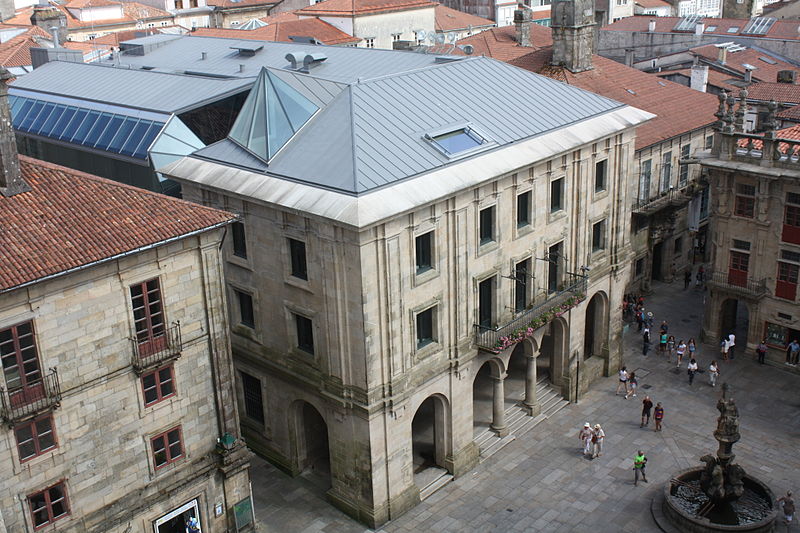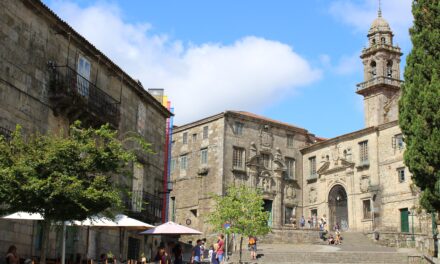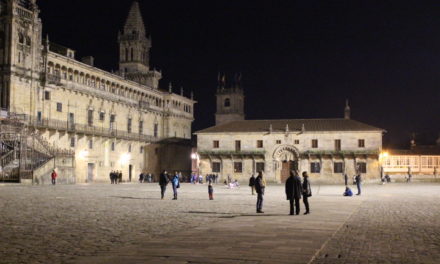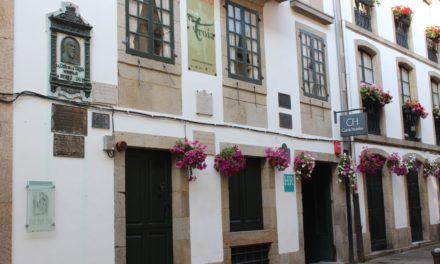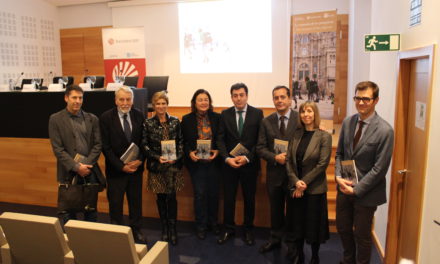The Museum of Pilgrimages and Santiago is a must for any pilgrim or tourist passing through Compostela. For several years now it has been located near the cathedral, in Platerías square, where it occupies a beautiful building that was once known as the old Bank of Spain, designed 1939 by the architect Romualdo Madariaga Céspedes.
The current premises of the museum were actually occupied by the Bank of Spain for decades, which only closed its doors as recently as 2004. A complete renovation was then undertaken in order to house the rich collection of the Museum of the Pilgrimages and of Santiago, which until then had occupied a smaller building known in Compostela as the Gothic House. The architect responsible for the renovations was the architect Manuel Gallego Jorreto (O Carballiño, 1936), one of the best-known Galician professionals in his field, who was awarded the Gold Medal of Architecture in 2010.
The former headquarters of the museum, the aforementioned Gothic House, located on the Rua de San Miguel, continues to form part of its structures and is currently the headquarters of the Library and Documentation, Research and Interpretation Center of the museum, as well as being home to other internal services such as the administrative, technical, research and management areas.
The current Museum of Pilgrimages and Santiago houses works of a very varied nature: documentary and historical vestiges of all kinds related to the universal phenomenon of pilgrimage, the Camino de Santiago and the city of Compostela as a goal.
The Museum was created in 1951. At that time, the idea that lay behind its creation was to obtain funds through private and public donations. In the sixties and seventies numerous funds were made available from different sources, particularly from other museums. In 1995 the management of the Museum passed to the Xunta de Galicia, which since then has developed a policy of purchasing works and funds related to the Camino de Santiago and the city of Compostela. In this way, the collections and the museum itself grew in size, particularly in the latter years, when the exhibition halls were transferred to the current building in the Plaza de Platerías.
The Museum now has important collections of sculpture, painting, jet, engraving, and decorative arts, as well as an important fund of archaeological items, ethnographic artifacts and documentary and bibliographic collections.
One particularly cherished aspect in its collections is the Jacobean iconography, in particular the representations of the figure of the Apostle Santiago who may be seen in all kinds of works and images from the different regions of Spain, as well as numerous foreign countries.
Also noteworthy are the jet artifacts: jewels, amulets and objects of all kinds, mostly from the city of Compostela itself and in all cases closely linked to the pilgrimage. Within its library and exhibition rooms an important collection of old books can be found, books which are especially valuable in relation to the iconography of Jacob and to the old Military Order of Santiago.
Photo: We have taken this image of the Commons Wikipedia project, its author is P. Lameiro.
Practical information:
WEBSITE
http://Http://museoperegrinacions.xunta.gal
EXHIBITION OFFICE
Praza das Praterías, 2.
Tel: +34 981 566 110.
LIBRARY
Rúa San Miguel, 4. (Gothic house).
Tel: +34 881 867 315/316 Fax: +34 881 867 323
SCHEDULE
From Tuesday to Friday: 09.30 – 20.30
Saturdays: 11.00 – 19.00
Sundays and holidays: 10.15 – 14.45

